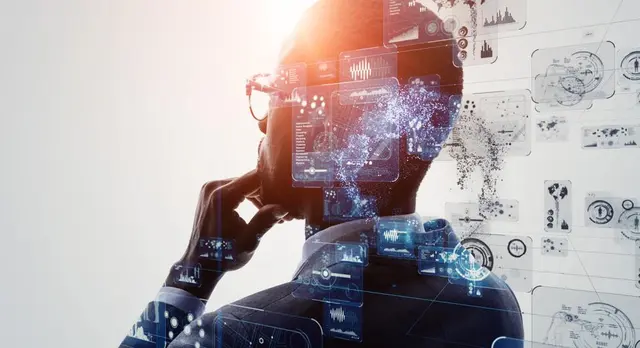Exploring the Impact of Artificial Intelligence on Human Interaction
Artificial intelligence (AI) has become a common feature of many of the technologies we use on a daily basis. From virtual assistants to automated customer service systems, AI is being used to improve our lives in a variety of ways. But what impact is AI having on our interactions with one another?
One of the most obvious changes that AI has brought to our interactions is the automation of communication. From emails to text messages, AI-powered chatbots can now send automated responses to our inquiries, often with greater accuracy and speed than a human could provide. This is great for those who need a quick answer, but it also eliminates the need for us to communicate directly with each other in some cases. This could lead to a decrease in face-to-face interaction and a decrease in socialization overall.
Another way AI is impacting our interactions is in the realm of data analysis. By collecting and analyzing large amounts of data, AI can provide us with insights and suggestions that we may not have been able to come to on our own. For example, AI can be used to help us better understand our customers, allowing us to tailor our products and services to their needs. This can lead to improved customer relationships and better customer service.
AI can also be used to automate mundane tasks and enable us to focus on more important goals. For example, AI can be used to automate administrative tasks like scheduling meetings, tracking expenses, and managing customer information. This can help us to focus more on interactions with other people, rather than being bogged down in the details of running a business.
Finally, AI can be used to create more personalized experiences. By analyzing user behavior, AI can create more tailored experiences that are based on the user’s individual preferences and needs. This can lead to improved customer satisfaction, as users are more likely to have a positive experience when they feel like they are being catered to.
The impact of AI on human interaction is clear. From improved customer service to more personalized experiences, AI is making it easier for us to interact with one another in a variety of ways. As AI continues to evolve, its impact on our interactions will likely become even more profound.
Examining the Potential of Artificial Intelligence to Make Technology Seamless
The possibilities surrounding artificial intelligence (AI) are endless. AI has the potential to transform the way we interact with technology, making it easier and more intuitive than ever before. With AI, technology could become seamless, allowing us to interact with it in a natural and effortless way.
One of the key areas where AI can make a difference is in how devices interact with each other. Currently, there are a variety of complex protocols and standards that need to be followed for devices to be able to ‘talk’ to each other. AI is uniquely positioned to reduce this complexity and make it possible for devices from different manufacturers to connect and share information without the need for complicated integration.
AI can also be used to create more personalized experiences. By learning user preferences and behaviour, AI can be used to provide tailored experiences that better meet user needs. AI could be used to create more intuitive interfaces, allowing users to interact with technology in a more natural way. This could be done through voice commands, gesture recognition, or even facial recognition.
AI can also be used to improve security and privacy. By leveraging AI to identify and respond to suspicious activity, we can create a more secure environment for users. AI can also be used to create better privacy controls, allowing users to control how and when their data is used.
Finally, AI can be used to create more efficient systems. By ‘learning’ how systems are used, AI can identify areas where improvements can be made and suggest changes that can improve efficiency and reduce costs.
The potential of AI to make technology seamless is undeniable. As technology continues to evolve, AI will play an increasingly important role in how we interact with it. With AI, we can create more intuitive and personalized experiences, improve security and privacy, and make our systems more efficient.
Investigating the Possibilities for Artificial Intelligence to Make Technology Invisible
Imagine a world in which technology was practically invisible – where it was seamlessly integrated into our lives and was no longer something we had to actively engage with or adjust to. Artificial intelligence (AI) has the potential to make this a reality. AI has been described as the key to unlocking a world of new possibilities, with the potential to revolutionize the way we interact with technology.
AI can be used to automate repetitive tasks and make our lives easier. This means that instead of having to manually complete mundane tasks, such as sorting through emails or data entry, AI can do it for us. AI can also be used to build more intuitive user interfaces for devices, allowing users to interact with them more naturally and easily.
AI can also be used to customize experiences for individual users. For example, AI-powered systems can be used to anticipate user needs and provide personalized recommendations. This could allow users to get the most out of their technology, while also making it easier to use.
AI can also make our devices more secure by detecting and responding to threats more quickly. AI can be used to detect malicious activity and respond to it faster than ever before, allowing users to feel safe and secure when using their devices.
Ultimately, AI has the potential to make technology virtually invisible by automating mundane tasks, making it easier to use, and improving security. This could allow us to use technology without having to think about it, freeing us to focus on what really matters.



